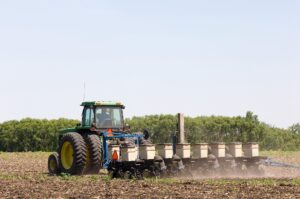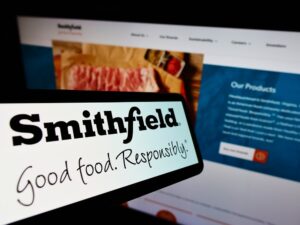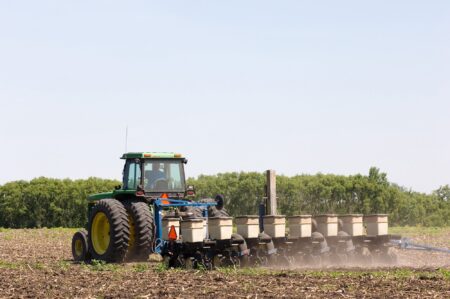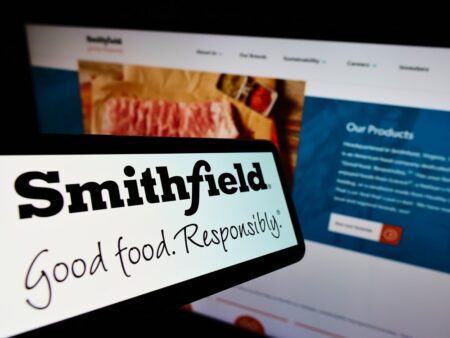What Happened
The Nov. 8 USDA World Agriculture Supply and Demand Estimates (WASDE) report confirmed what many had thought: Dry weather in August impacted U.S. soybean yield. However, at 51.7 bushels per acre (bpa), the November figure was lower than the pre-report estimate of 52.9 bpa and down 1.4 bushels from the previous month. Traders were quick to respond with advancing prices.
Why This Is Important
High crop ratings at the end of summer had some private estimates suggesting yield may have been closer to 54 or 55 bpa. However, the October estimate remained unchanged at 53.1 bpa from September, which may have implied that an expectation for a lower yield was already factored into the market. The November production estimate dropped from 4.582 billion bushels in October to 4.461 billion. Line-item changes were a 25-million-bushel decrease in exports and a 15-million-bushel reduction in the soybean crush. Ending stocks (carryout) dropped 80 million bushels to 470 million, or 14.5%.
While a 15% reduction in ending stocks is important, the current carryout at 470 million bushels will likely still be viewed as an adequate supply, at least for now. Weather in South America and crop conditions will be more closely watched. The trend of carryout, however, is something the market will pay attention to. If crop conditions in South America were to deteriorate, U.S. soybean prices are now positioned to rally, perhaps even sharply. World vegetable oil supplies continue to tighten, as prices recently have rallied to new contract highs.
What Can You Do?
Be prepared for increased price volatility. Between a smaller U.S. crop and advances in soybean oil prices due to tightening vegetable supplies, the attitude is quickly shifting from over-supply and bearish to potentially supportive. Creating a balanced approach — incorporating sales and re-ownership — should be measured and implemented.
Set target prices above current price levels to initiate or add sales for both 2024 and 2025 crops. Consider call options or bull call spreads for re-ownership. If you prefer to store, consider purchasing put options to establish a price floor while leaving price open for appreciation. Connect with your advisor to discuss these strategies.
Find What Works for You
Work with a professional to find the strategy or strategies that are best suited for your operation. Communication is important. Ask critical questions and garner a full comprehension of consequences and potential rewards before executing. The idea is to make good decisions for the operation rather than emotionally charged responses to market moves, which are always dynamic.
Editor’s Note: If you have any questions on this Perspective, feel free to contact Bryan Doherty at Total Farm Marketing: 800-334-9779.
Disclaimer: The data contained herein is believed to be drawn from reliable sources but cannot be guaranteed. Individuals acting on this information are responsible for their own actions. Commodity trading may not be suitable for all recipients of this report. Futures and options trading involve significant risk of loss and may not be suitable for everyone. Therefore, carefully consider whether such trading is suitable for you in light of your financial condition. Examples of seasonal price moves or extreme market conditions are not meant to imply that such moves or conditions are common occurrences or likely to occur. Futures prices have already factored in the seasonal aspects of supply and demand. No representation is being made that scenario planning, strategy, or discipline will guarantee success or profits. Any decisions you may make to buy, sell, or hold a futures or options position on such research are entirely your own and not in any way deemed to be endorsed by or attributed to Total Farm Marketing. Total Farm Marketing and TFM refer to Stewart-Peterson Group Inc., Stewart-Peterson Inc., and SP Risk Services LLC. Stewart-Peterson Group Inc. is registered with the Commodity Futures Trading Commission (CFTC) as an introducing broker and is a member of the National Futures Association. SP Risk Services, LLC is an insurance agency and an equal opportunity provider. Stewart-Peterson Inc. is a publishing company. A customer may have relationships with all three companies. SP Risk Services LLC and Stewart-Peterson Inc. are wholly owned by Stewart-Peterson Group Inc. unless otherwise noted, services referenced are services of Stewart-Peterson Group Inc. Presented for solicitation.
About the Author: With the wisdom of 30 years at Total Farm Marketing and a following across the Grain Belt, Bryan Doherty is deeply passionate about his clients, their success, and long-term, fruitful relationships. As a senior market advisor and vice president of brokerage solutions, Doherty lives and breathes farm marketing. He has an in-depth understanding of the tools and markets, listens, and communicates with intent and clarity to ensure clients are comfortable with the decisions.




:max_bytes(150000):strip_icc()/soybeans-money-close-4d07f8f74d1d47a5bc4868eac9b11e02.jpg)





:max_bytes(150000):strip_icc()/51040382571_e6791ae671_o-2000-52912d7b728646c0b32c38ee0690db60.jpg)
:max_bytes(150000):strip_icc()/MoneyInCornEar-CloseUP-2000-f456e86b83154a8b8082d8f92eba830d.jpg)
:max_bytes(150000):strip_icc()/business-success-and-growth-concept-stock-market-business-graph-chart-on-digital-screen-forex-market--gold-market-and-crude-oil-market---1137583127-d34773504e394168bcaca53c7b018834.jpg)